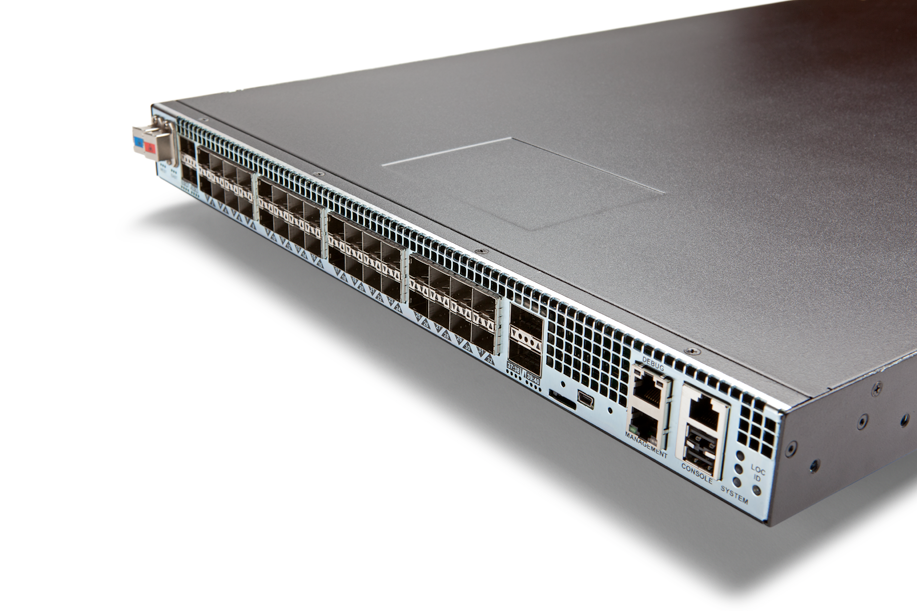Plexxi Reinvents Data Center Networking
Deep in the recesses of the “cloud,” there’s a terrible waste of human and computing energy going on, says David Husak, the CEO and founder of networking startup Plexxi.

The Cambridge, Mass.-based company today disclosed its product and technology strategy, becoming the latest to tout software-defined networking as a solution to the overly complex and rigid infrastructure in data centers today. If it works, data center operators will be able to manage networking resources more easily and lower their operating costs.
Plexxi has developed a switch that breaks with the traditional Internet architecture, where an access switch talks to other switches in order to connect two computers. This multi-tiered structure of switches negotiating with other switches so, for example, two servers can pass information between them has created bottlenecks and unnecessary overhead, says Husak.
“We’re getting to the end of the runway on the economics and the power and costs and operational inefficiency of building networks that way,” he says.
Rather than send network traffic up two layers to the data center’s core switches and back down to another access switch, Plexxi’s devices are designed to communicate directly with each other using high-speed fiber optic interconnections. Using photonic switching for data center traffic loads, which hasn’t been done in this way before, means Plexxi switches can replace the conventional network backbone, says Husak, who was CTO of networking company Reva Systems before starting Plexxi.
The product line also includes a software control system that allows administrators to virtualize their networking hardware. That means people don’t need to know where physical subnetworks are located to allocate bandwidth to different applications and automate other tasks—the main idea behind software-defined networking. Instead, switches can appear as a pool of available resources and the software can sort out how best to use them to meet traffic demands.
Virtualizing network gear gained a lot of attention earlier this year, when server virtualization powerhouse VMWare bought software-defined networking startup Nicira for $1.26 billion, its biggest acquisition to date. (See, VMWare Buys a Chance to Reinvent the Internet.)
But Plexxi’s approach is dramatically different from Nicira, says Bob Laliberte, an analyst at Enterprise Strategy Group. Nicira’s software (it doesn’t make hardware) creates a virtual switch on top of the existing hardware. Plexxi, by contrast, has a physical switch and software to achieve the same goal of reducing complexity.
Streamlining network traffic is becoming increasingly important as cloud companies consolidate their data centers and take on more complex jobs. “To date organizations have leveraged different technologies to try to either reduce the number of layers (combine access and aggregation) or virtualize the infrastructure so it becomes a single logical switch,” Laliberte says.
Husak says its system is more efficient because it reduces the number of switches needed and makes it easier for data centers to implement energy-saving measures on other equipment.
The price of its switches is comparable with existing providers and Plexxi next year will have more scalable switches appropriate for large-scale computing. Rethinking switching architecture is necessary to meet cloud computing needs in the years ahead, Husak says. “The networking world has been asleep at the wheel.”
Keep Reading
Most Popular
Large language models can do jaw-dropping things. But nobody knows exactly why.
And that's a problem. Figuring it out is one of the biggest scientific puzzles of our time and a crucial step towards controlling more powerful future models.
How scientists traced a mysterious covid case back to six toilets
When wastewater surveillance turns into a hunt for a single infected individual, the ethics get tricky.
The problem with plug-in hybrids? Their drivers.
Plug-in hybrids are often sold as a transition to EVs, but new data from Europe shows we’re still underestimating the emissions they produce.
Stay connected
Get the latest updates from
MIT Technology Review
Discover special offers, top stories, upcoming events, and more.